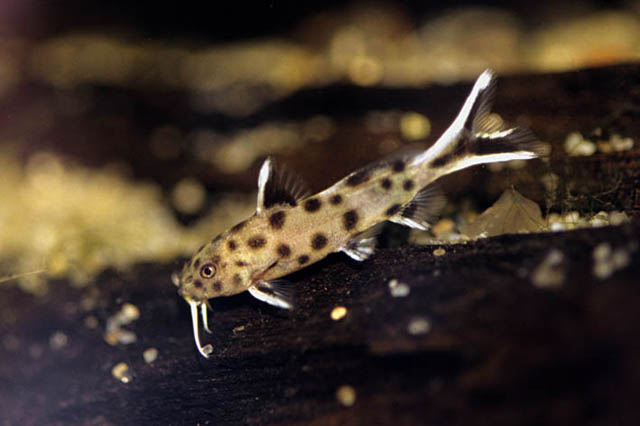|
Dorsal spines (total): 2-2; Dorsal soft rays (total): 7-8; Anal spines: 0-0; Anal soft rays: 12-13; Vertebrae: 34-35. Body is not compressed; predorsal profile is slightly convex; skin on body forming numerous vertical folds; papillae absent; head slightly depressed and broad (Ref. 59365). Eyes dorsolateral, ovoid, its diameter 25.2-35.8% of snout length (Ref. 59365). Mandibular teeth 35-51, short and unicuspid, arranged in 6 short, transverse rows (Ref. 59365). Maxillary barbel short, extending at least to base of pectoral spine, with small papillae at base and narrow basal membrane; lateral mandibular barbel extending to point just past anterior margin of pectoral girdle, with 4-6 short, simple, weakly tuberculate branches, usually lacking secondary branches; medial mandibular barbel approximately 1/3 to 1/2 length of lateral barbel, with 4-6 pairs of tuberculate branches, many secondary branches present (Ref. 59365). Dorsal fin spine short, striated, slightly curved, terminating in a short, white filament; anterior margin of spine smooth, posterior margin with small serrations distally (Ref. 59365). Pectoral fin spine roughly equal in length to dorsal fin spine, striated, slightly curved, terminating in short, white filament; anterior spine margin smooth, posterior margin with large, retrorse serrations along entire length (Ref. 59365). Adipose fin long, well dveloped, margin convex (Ref. 59365). Body with large spots, fin spines white (Ref. 59365). |

